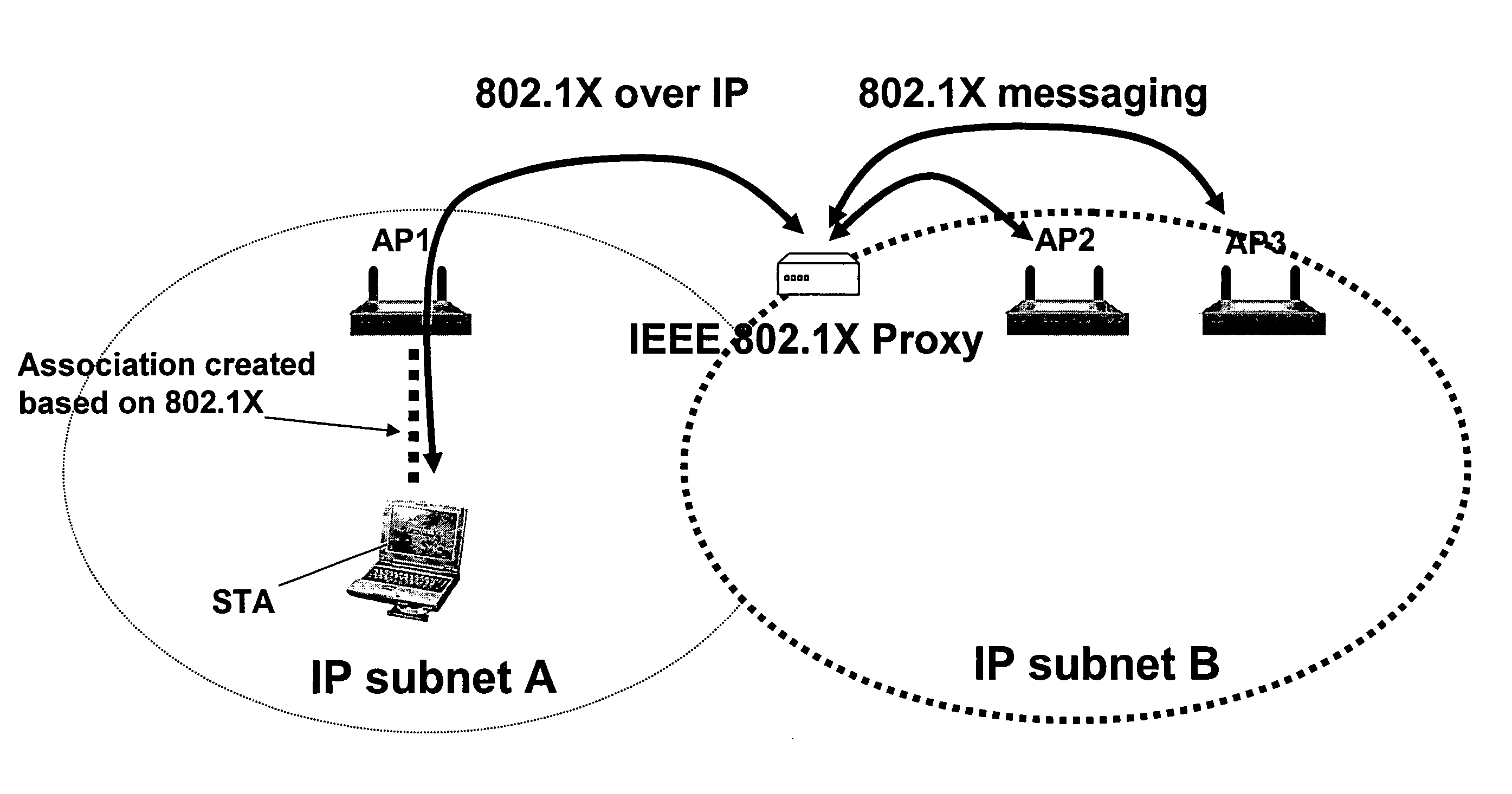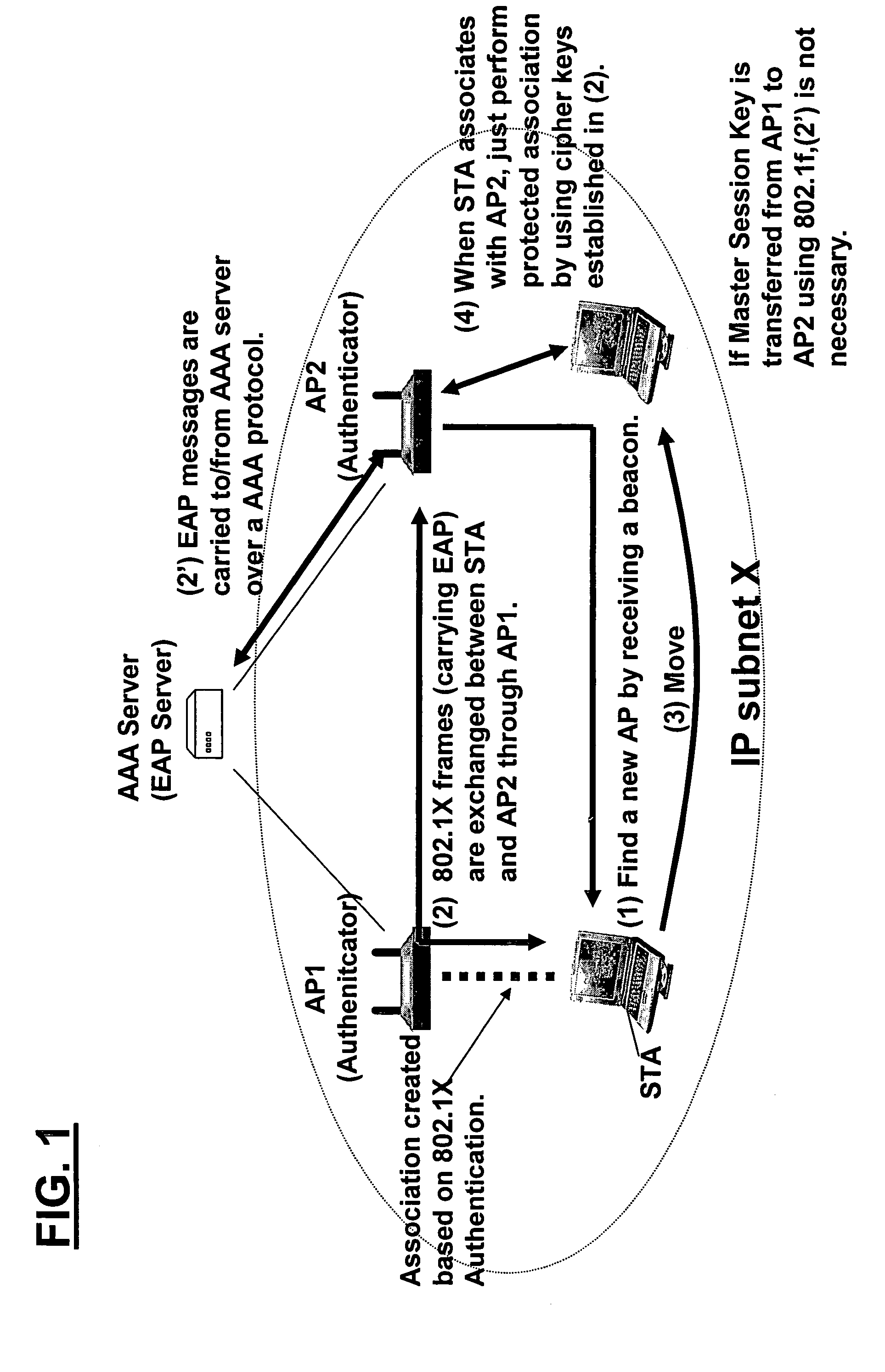Mobility architecture using pre-authentication, pre-configuration and/or virtual soft-handoff
a technology of mobility architecture and pre-configuration, applied in the field of mobile network communications, can solve the problems of accumulating delay for re-establishing non-transferable contexts, unable to properly deliver packets of routing protocols, and affecting the re-establishing of non-transferable contexts
- Summary
- Abstract
- Description
- Claims
- Application Information
AI Technical Summary
Benefits of technology
Problems solved by technology
Method used
Image
Examples
Embodiment Construction
[0087]While the present invention may be embodied in many different forms, a number of illustrative embodiments are described herein with the understanding that the present disclosure is to be considered as providing examples of the principles of the invention and that such examples are not intended to limit the invention to preferred embodiments described herein and / or illustrated herein. By way of example, while illustrative embodiments implemented within 802.11i and / or other environments are described herein, aspects of the present invention can be implemented within a variety of other environments as would be appreciated based on this disclosure.
[0088]IEEE 802.11i Pre-Authentication
[0089]FIG. 1 shows an illustrative sequence of IEEE 802.11i pre-authentication. FIG. 1 assumes that the mobile station has already performed 802.11i authentication and has associated with a first access point AP1.
[0090]As shown at (1) in FIG. 1, the mobile station finds a new access point by receiving...
PUM
 Login to View More
Login to View More Abstract
Description
Claims
Application Information
 Login to View More
Login to View More - R&D
- Intellectual Property
- Life Sciences
- Materials
- Tech Scout
- Unparalleled Data Quality
- Higher Quality Content
- 60% Fewer Hallucinations
Browse by: Latest US Patents, China's latest patents, Technical Efficacy Thesaurus, Application Domain, Technology Topic, Popular Technical Reports.
© 2025 PatSnap. All rights reserved.Legal|Privacy policy|Modern Slavery Act Transparency Statement|Sitemap|About US| Contact US: help@patsnap.com



